
There’s something about catmint (Nepeta spp. and cvs., USDA Hardiness Zones 3–8) that buoys my spirits. Whether it’s along a cobbled path in England or in the median planters that festoon Chicago boulevards, this plant amazes me for its ability to stand out in the most inhospitable environments. The vivid lavender-blue flowers, over many weeks in summer, seem to glow just as brilliantly in the garden as they do above a harsh expanse of concrete and macadam. The simplest catmint treat for me, though, is watching my cat Boo come under its alluring spell.
Learn more: Catmints for the Northwest
My abiding fondness for catmint is unwavering despite the fact that some types have been overused to the point of ubiquity. And it was this love that made me want to trial as many types as possible to find out which ones were the best. It’s true that many gardening friends scrunch up their faces when catmints are mentioned. Now, while I admit that I’ll be fine never seeing another planting of catmint and Knock Out® roses (Rosa ‘Radrazz’, Zones 4–9), I’m not ready to turn my back on this exceptional group of workhorse perennials. This is especially true when it comes to a few select kinds that stand out for their dependability, seemingly never-ending blooms, and fetching foliage.
Top performers
These varieties were chosen as the best in terms of bloom time, overall habit, disease resistance, and low maintenance.
Based on popularity and the many awards it has garnered, ‘Walker’s Low’ (N. racemosa ‘Walker’s Low’, top photo) is definitely the darling of this genus. At 30 inches tall, ‘Walker’s Low’ is larger than might be expected—the name refers to the garden in Ireland where it originated and does not reflect its size. Luminous blue flowers are borne in upward-curving plumes that can reach 12 inches long, creating one of the most impressive floral displays ever. At peak bloom in late spring, the flowers fully obscure the handsome gray-green leaves for several weeks. ‘Walker’s Low’ is indispensable for softening hard edges along walks and patios, and it combines wonderfully with a variety of perennials. A favorite combination in my garden is ‘Walker’s Low’ and Japanese roof iris (Iris tectorum, Zones 5–9). I love the color echo of the lavender-blue flowers and how nicely the broad, spiky iris leaves juxtapose the soft, billowy catmint.
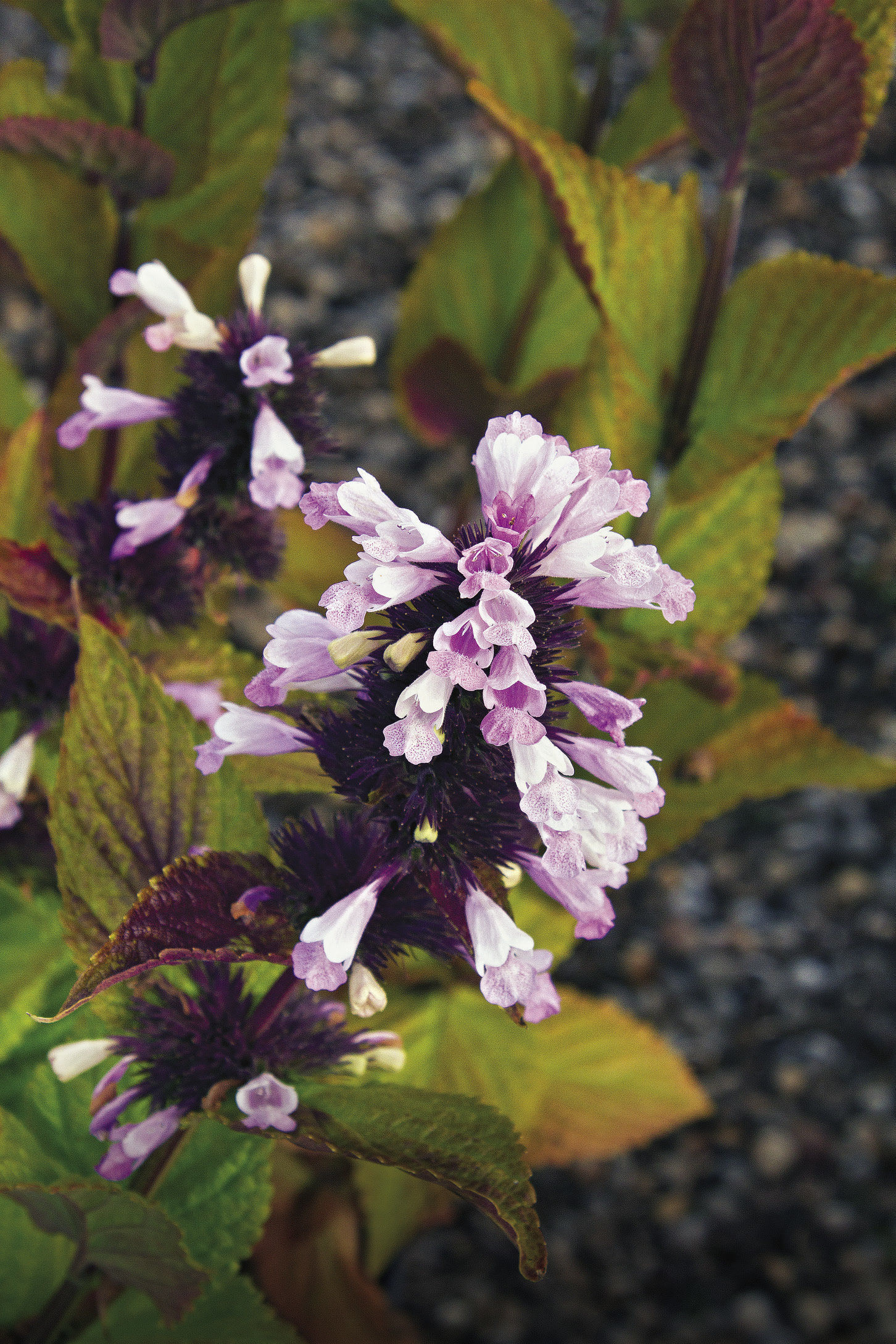
‘Sweet Dreams’ (N. subsessilis ‘Sweet Dreams’) is a pleasant departure from other catmints in flower and foliage. Charming pink blossoms, beautifully paired with burgundy bracts, are packed into plump clusters from early summer to fall. Each trumpet-shaped flower is 1 inch long, which is pretty big by catmint standards. If you’re thinking this is just another gray-green–leaved catmint, then the lush green foliage will surprise you, especially when it colors up in fall. ‘Sweet Dreams’ is a sizable plant but stays compact all summer. Japanese catmints (N. subsessilis and cvs.), like ‘Sweet Dreams’, stand apart from other catmints for their affinity for moist soils and partial shade, although they are also completely at home in full sun. On the downside, the spent brown flowers hold on, so deadheading after the first bloom flush is essential to keep ‘Sweet Dreams’ from looking nightmarish.
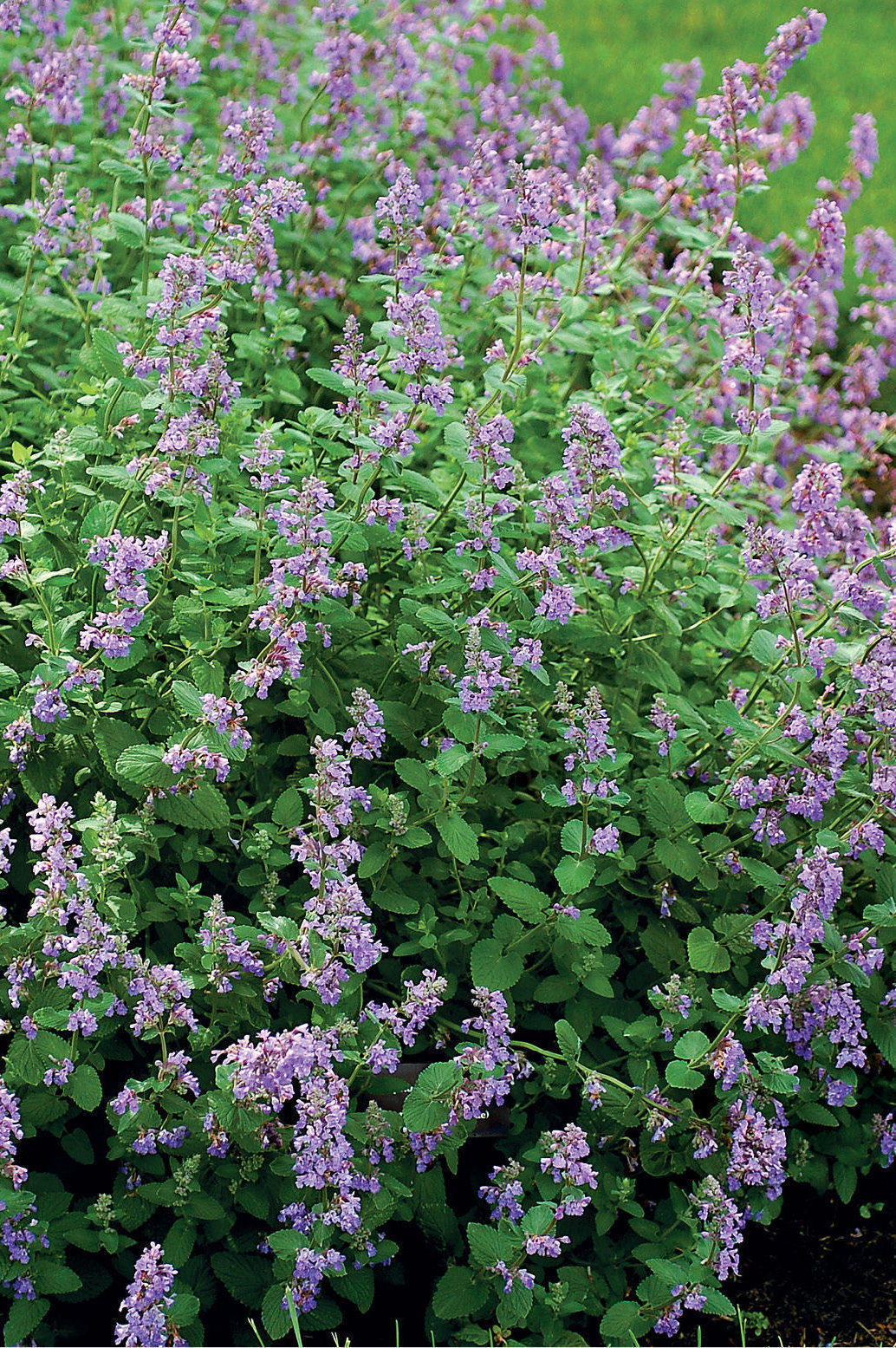
It’s wonderful when great gardeners are immortalized with great plants. ‘Joanna Reed’ (N. ‘Joanna Reed’), named for the late Pennsylvania gardener who discovered it, is just such a plant. It is one of the tidiest catmints I’ve ever grown, an attribute that clinched a top rating in our trial. Its strong stems never flopped, and new growth grew quickly to conceal the declining flower stems, eliminating the need for deadheading. Compact, wide-spreading plants are covered with a continuous display of large violet-blue flowers from spring into fall, so much so that I can’t picture ‘Joanna Reed’ without flowers. The dusty green leaves are attractive and unpalatable to deer—a bragging point shared by many catmints.
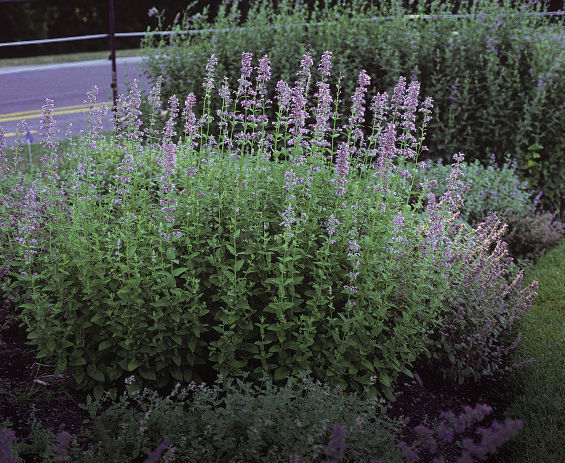
A quick online search confirms that Greek catmint (N. parnassica) is better known in European gardens, but this uncommon beauty is worth looking for here. Greek catmint is big and bold. Stems up to 6 feet tall are possible, although the stems of our trial plants only reached 4 feet tall and wide. The aromatic leaves land somewhere between green and gray-green in the color spectrum. Small lavender flowers, less than a half inch long, are generously packed into long spikes from early summer into early fall. Greek catmint certainly has the stature to anchor any garden, where it happily soaks up all the sun you can give it.

I think ‘Six Hills Giant’ (N. ‘Six Hills Giant’) is the archetypal catmint and one by which all other catmints should be judged. The inclusion of “giant” fittingly describes the robust plant size and the bodacious flower show. Long flower spikes command attention from late spring onward. In our trial, ‘Six Hills Giant’ was reliably strong stemmed, but like many catmints, it may begin to relax or even recline several weeks into the flowering period. Don’t be timid about whacking it back after this first flower flush, which encourages new, stronger stems. I know it’s difficult to think about sacrificing blooms, but there will be many more to come. Drop ‘Six Hills Giant’ next to almost anything pink in the garden for the perfect show.
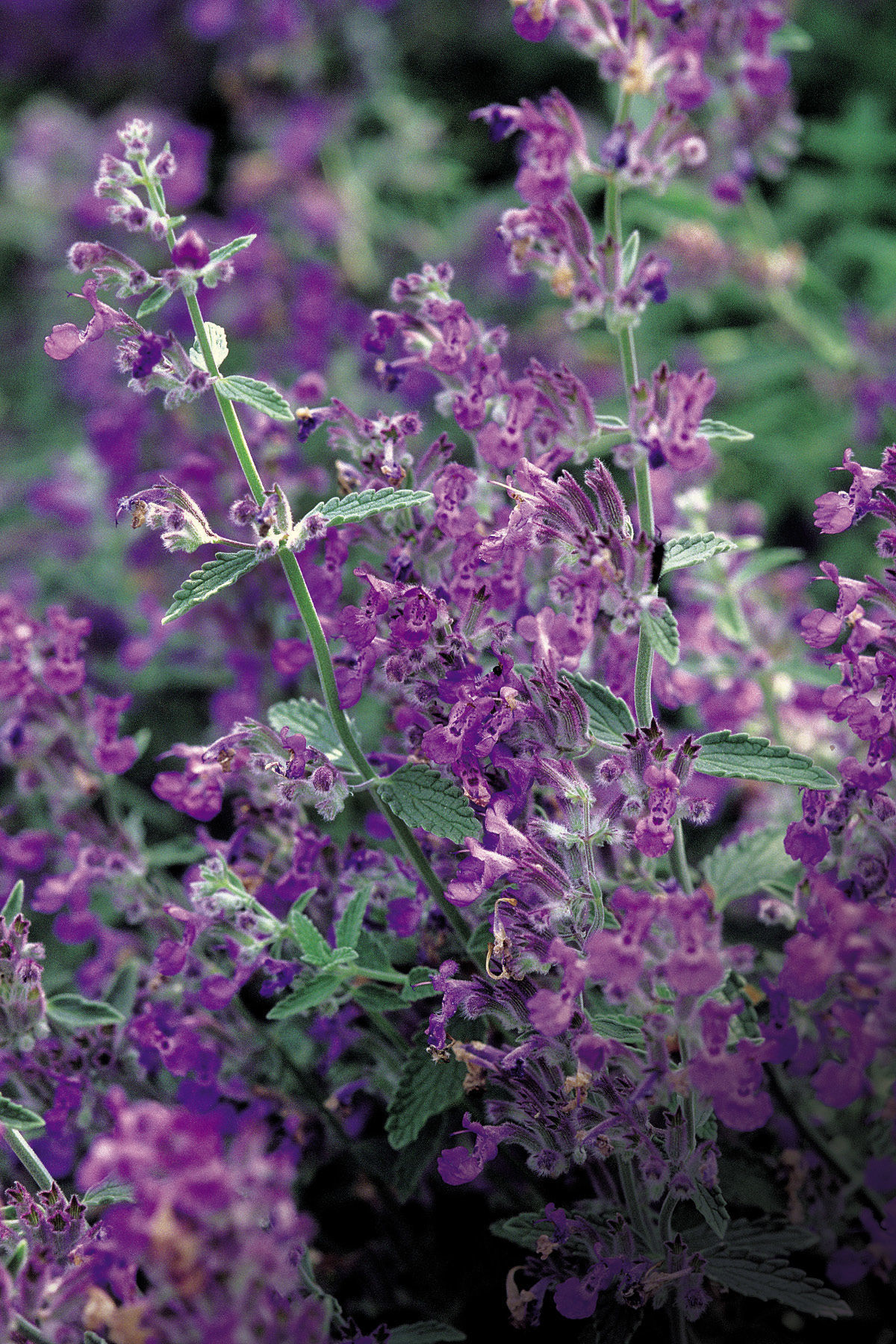
Chosen for its blue flowers, ‘Select Blue’ (N. × faassenii ‘Select Blue’) is a superior addition to the list of long-blooming catmints. I don’t think we saw a day without flowers from midspring to midfall. Although touted as darker blue than the straight species (N. × faassenii), the flowers are, in fact, lavender with a darker calyx that imparts a swarthy complexion. The low, mounded habit remained compact late into the season without shearing. The xeriscape experts at High Country Gardens in New Mexico recommend ‘Select Blue’ for its toughness and drought tolerance, and we can attest to its strong performance under average garden conditions, as well.
Getting down to the nitty-gritty of catmint
Catmints are rugged, free-flowering perennials that as a rule prefer to grow in full sun and well-drained soils. Some, however, are drought tolerant once established, which makes them popular for xeriscaping. They are sometimes called “poor man’s lavender” (Lavandula spp. and cvs., Zones 5–9), an understandable allusion as they are indeed great alternatives where lavenders are not hardy. Here are a few other things you should know about this group of plants.
▶ It’s not just the blooms that provide color

The floriferous nature of catmints, from early spring into autumn, is astonishing. The distinctive two-lipped, tubular flowers mark them as part of the mint family. Colorful calyces enhance the floral display even after the flowers have passed.
▶ There are two ways to propagate

You can propagate by spring division using a spade to slice off a section of an established clump. Each new division should have several young shoots and a substantial root system. Cuttings of catmint will root readily if taken from healthy shoots before flower buds form. Stick the cuttings in a moist medium, such as sand or a peat-perlite mix, and you can expect them to be rooted in several weeks.
▶ There’s a reason it’s the cat’s meow
The leaves and stems contain an essential oil that triggers a variety of behavioral responses in cats. Rubbing, licking, or biting the leaves produces a short-lived high, while eating the leaves may act as a sedative. By all accounts, catnip (N. cataria*)—a type of catmint—is particularly intoxicating to cats. Unfortunately, there is not much you can do to deter cats from mauling (and sometimes squashing) your plants. Barriers may be your only option, although most plants will recover quickly from an assault.
▶ Watch out for too much water
Wet or soggy sites can be the kiss of death for most catmints, although Japanese catmints (N. subsessilis and cvs.) have a penchant for moist soils and don’t mind partial shade, either. Disease and pests rarely trouble catmints, which always make the list of deer-resistant plants.
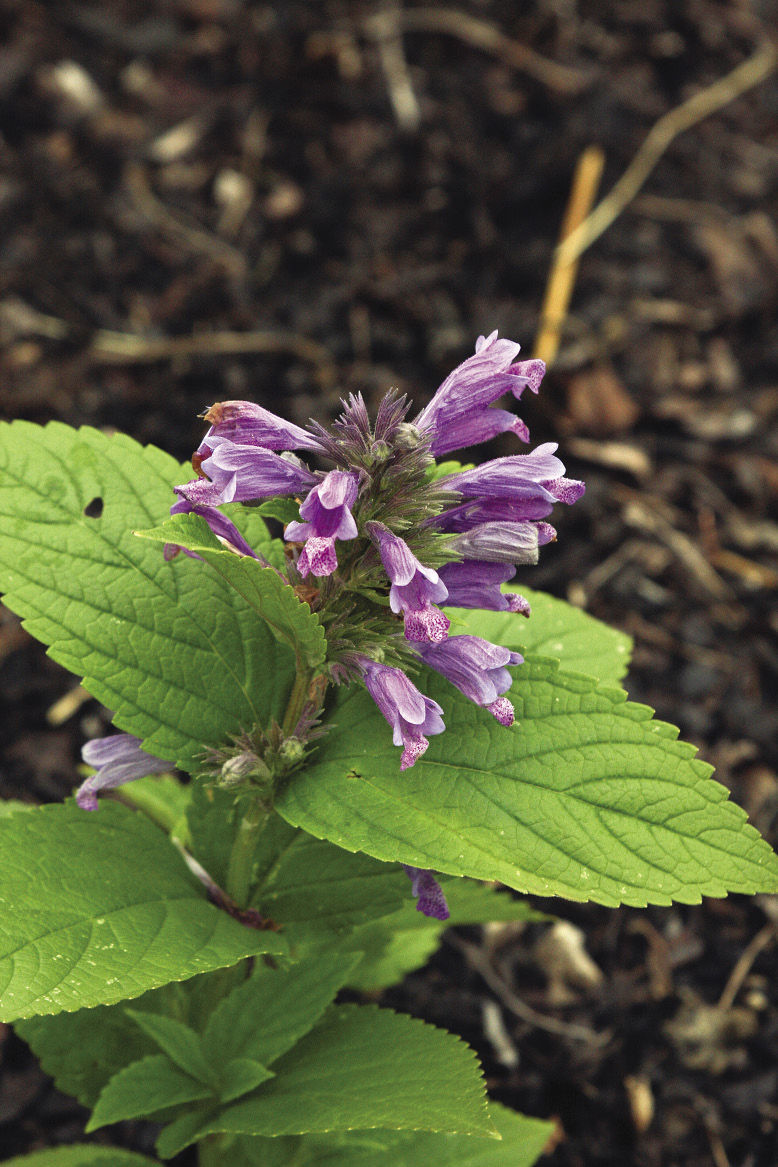
▶ Don’t forget the foliage
With so many flowers to draw the eye, it’s easy to overlook the leaves. The signature look for many catmints is fuzzy gray-green leaves, but a few species such as Siberian catmint (N. sibirica) have large green leaves instead. Having trouble identifying whether something is a catmint? Look for square stems—another telltale attribute of the mint family.
▶ Do forget about fertilizing
High fertility only encourages floppiness. When stems become floppy and flower production wanes, simply cut back the older stems by half or shear right down to the new leaves emerging from the crown. Sheared plants will recover within a few weeks and look like they were never cut back.
▶ Spring pruning is best
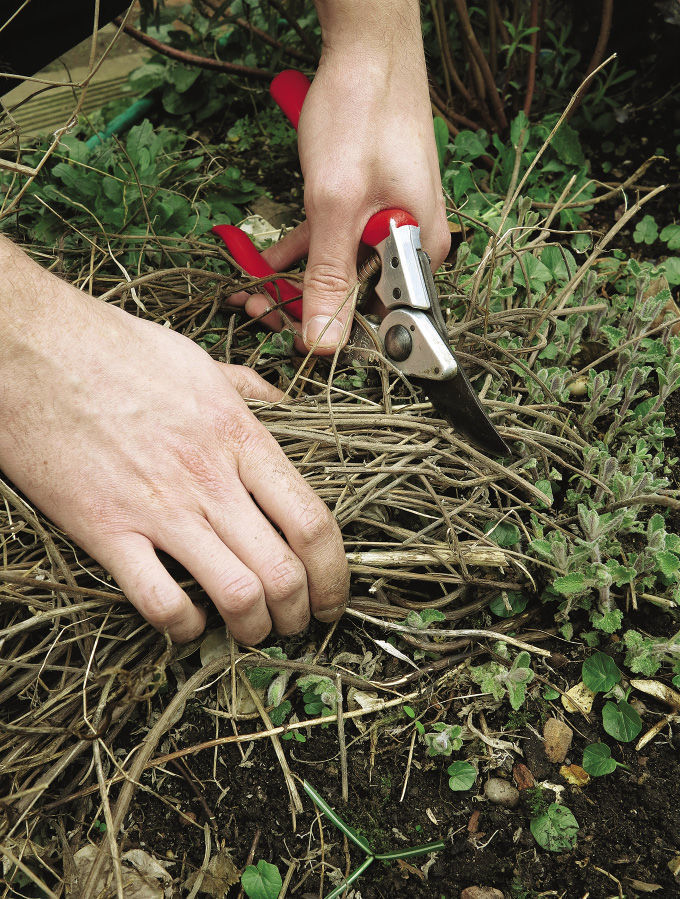
Even though it can be unsightly in winter, prune catmint in spring or once you know the growing season is truly over. Cutting it back even late in the season encourages it to resprout, and that new growth is susceptible to cold. Waiting until spring eliminates any potential winter damage.
New kids on the block
The following catmints are new to the trial, but their promising start has me excited to watch how they develop over the next few years.

1. I’ve been thrilled by ‘Blue Dragon’ (N. ‘Blue Dragon) since first seeing its bright blue-purple flowers in 2010. From late spring to midfall, a bounty of large flowers (1¼ inches long) draws butterflies and bees aplenty. The stunning floral display looks more like a sage (Salvia spp. and cvs, Zones 5–11) than a catmint. And its robust size, 3 feet tall and 5 feet wide, means it won’t be overlooked when not in bloom, which, by the way, is almost never. ‘Blue Dragon’ spreads to a generous clump over time but has not been a thug so far. To be on the safe side, it’s probably not the best choice for small gardens. We’ve lost a few plants over two winters, but keep in mind that it’s listed cold hardy only to Zone 6.
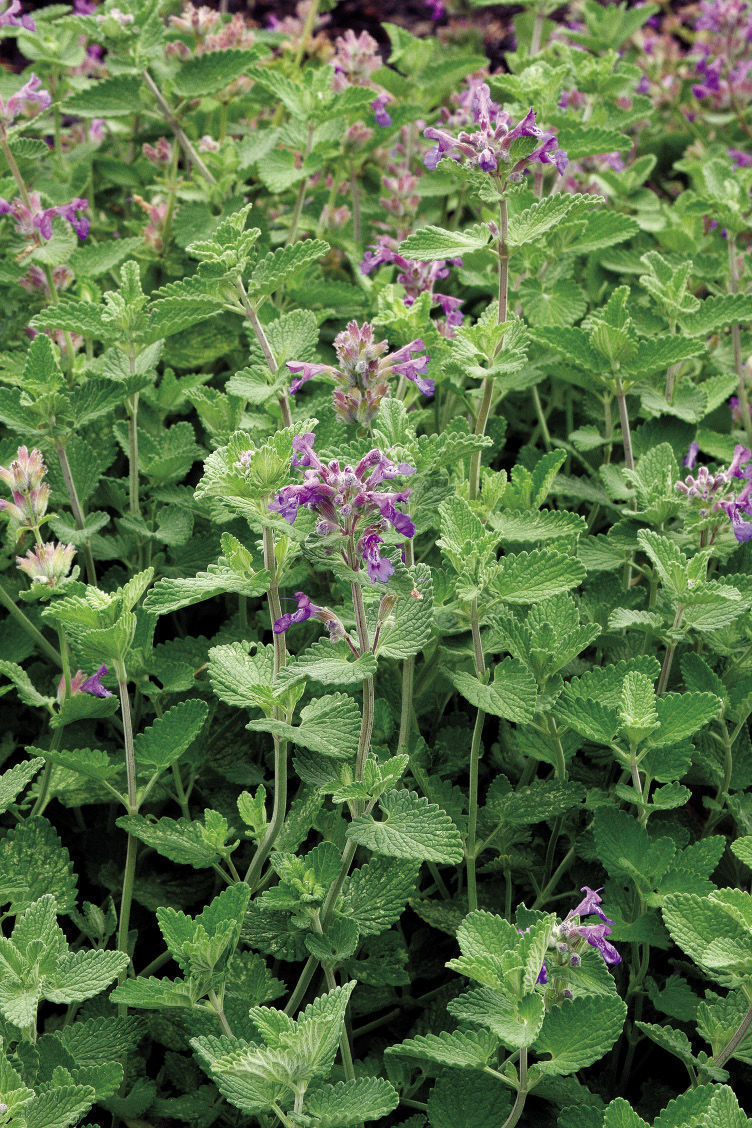
2. The deep lavender-blue flowers of ‘Early Bird’ (N. ‘Early Bird’) make their first appearance weeks before most other catmints. In 2012, following an especially mild winter in the Midwest, the flowers popped in early April, although I suspect normal bloom time will be typically later in the month. Much of the floral display comes from the colorful calyces because there is only a smattering of open flowers at any time. ‘Early Bird’ was in flower for nearly seven months last year, and, all the while, the plants kept their tidy habits. The low, spreading habit (15 inches tall and 60 inches wide) makes ‘Early Bird’ an exceptional ground cover. We grew ‘Early Bird’ next to ‘Meow’, which always made me think of Tweety Bird and Sylvester the Cat.
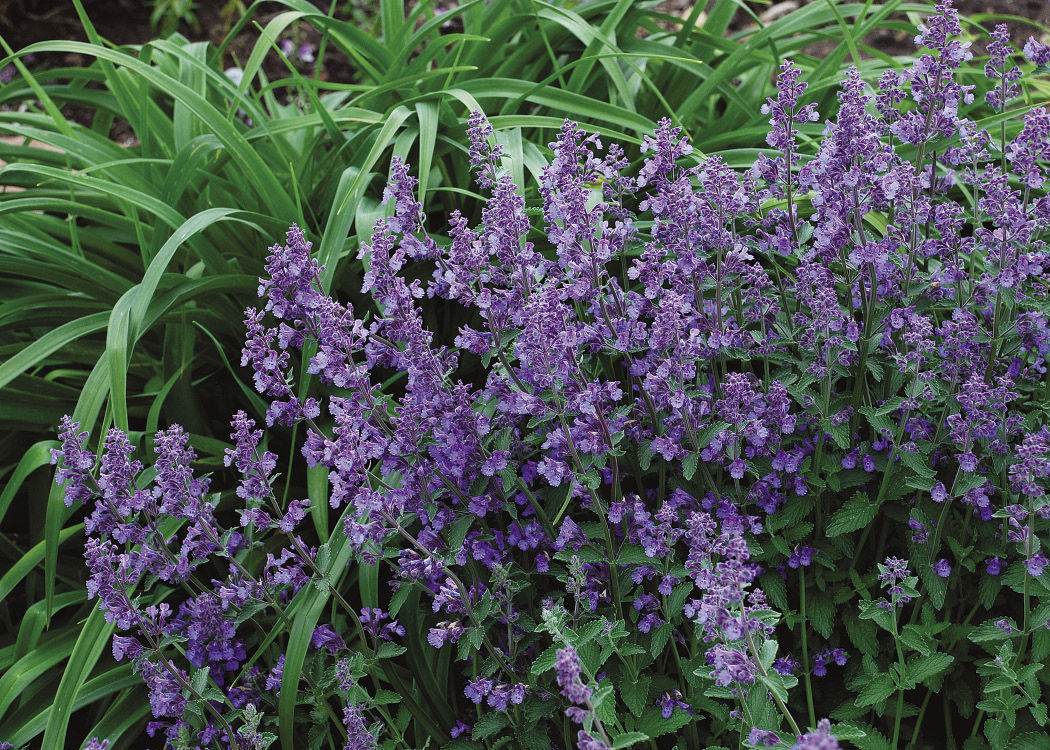
3. With just one season under its belt, ‘Lemon Pledge’ catnip (N. cataria* ‘Lemon Pledge’) is too new for a full stamp of approval, but it’s had an auspicious start. Let’s begin with the obvious: The lemon-infused fragrance of the soft gray-green leaves is like something right out of a can. Every time I walked by the plant, I couldn’t resist rubbing the leaves to release the scrumptious lemony scent. The lavender-blue flowers were not plentiful the first year, but the low, mounded habit was attractive all summer. Ultimately, ‘Lemon Pledge’ is expected to be 12 to 16 inches tall and 16 inches wide. Despite its unique fragrance, this is still a real-deal catnip, so don’t be surprised when it attracts neighborhood felines.
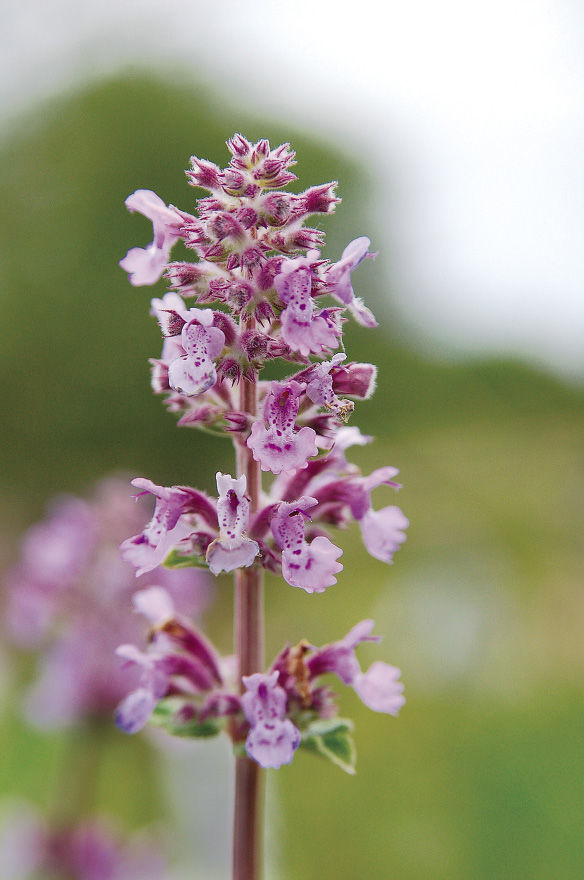
4. It has always surprised me that there aren’t more cat-themed Nepeta cultivar names—I particularly like ‘Cool Cat’ and ‘Kit Cat’—well, actually I like Kit Kat candy bars, but I digress. So when ‘Meow’ (N. ‘Meow’) made its debut, I was happy its witty name was attached to a fantastic plant. ‘Meow’ boasts plentiful flowers in large clusters from spring into fall. The light purple flowers fade to white, and this two-tone mix of pale colors creates a delicate floral display. The crowns of the plant begin to open midspring, which is fairly early compared with other catmints. The broad-spreading plants (26 inches tall and 50 inches wide) remain full and attractive for the rest of the season.

5. Little Trudy® (N. ‘Psfike’) comes on strong with an abundance of pretty lavender flowers from midspring into midfall. The low, compact habit (12 inches tall and 30 inches wide) was slightly larger than advertised, but plentiful moisture allowed the plants to grow taller in our trial than would be the case on drier sites. The sage green leaves are attractive all season, but the habit can look a bit ragged in midsummer. I recommend cutting back the stems midseason to rejuvenate the plants for a great late-season floral show.
Richard Hawke is the plant-evaluation manager at the Chicago Botanic Garden in Glencoe, Illinois.
Photos: Danielle Sherry; Doreen Wynja for Monrovia; Doreen Wynja; courtesy of Richard Hawke; Bill Johnson; Jerry Pavia; Friedrich Strauss/gapphotos.com; Graham Strong/gapphotos.com; courtesy of greatgardenplants.com; and courtesy of Intrinsic Perennial Gardens, Inc.
SOURCES
The following mail-order plant sellers offer many of the catmints featured.
Annie’s Annuals & Perennials, Richmond, Calif.; 888-266-4370; anniesannuals.com
Busse Gardens, Big Lake, Minn.; 800-544-3192; bussegardens.com
Forestfarm, Williams, Ore.; 541-846-7269; forestfarm.com
High Country Gardens, Santa Fe, N.Mex.; 800-925-9387; highcountrygardens.com
Fine Gardening Recommended Products

Coco Bliss 650gm Bricks (5-Pack) - Organic Coco Coir
Fine Gardening receives a commission for items purchased through links on this site, including Amazon Associates and other affiliate advertising programs.

DeWit Spork with Solid Socket
Fine Gardening receives a commission for items purchased through links on this site, including Amazon Associates and other affiliate advertising programs.

Ashman Garden Cultivator (1Pack)
Fine Gardening receives a commission for items purchased through links on this site, including Amazon Associates and other affiliate advertising programs.


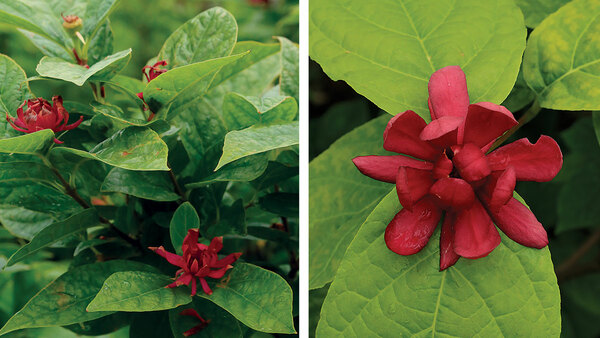

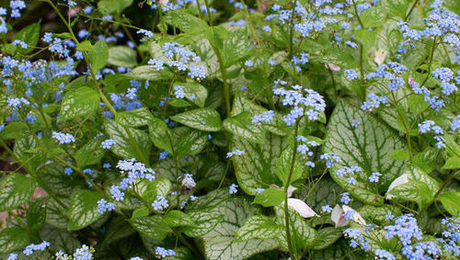














Comments
Log in or create an account to post a comment.
Sign up Log in